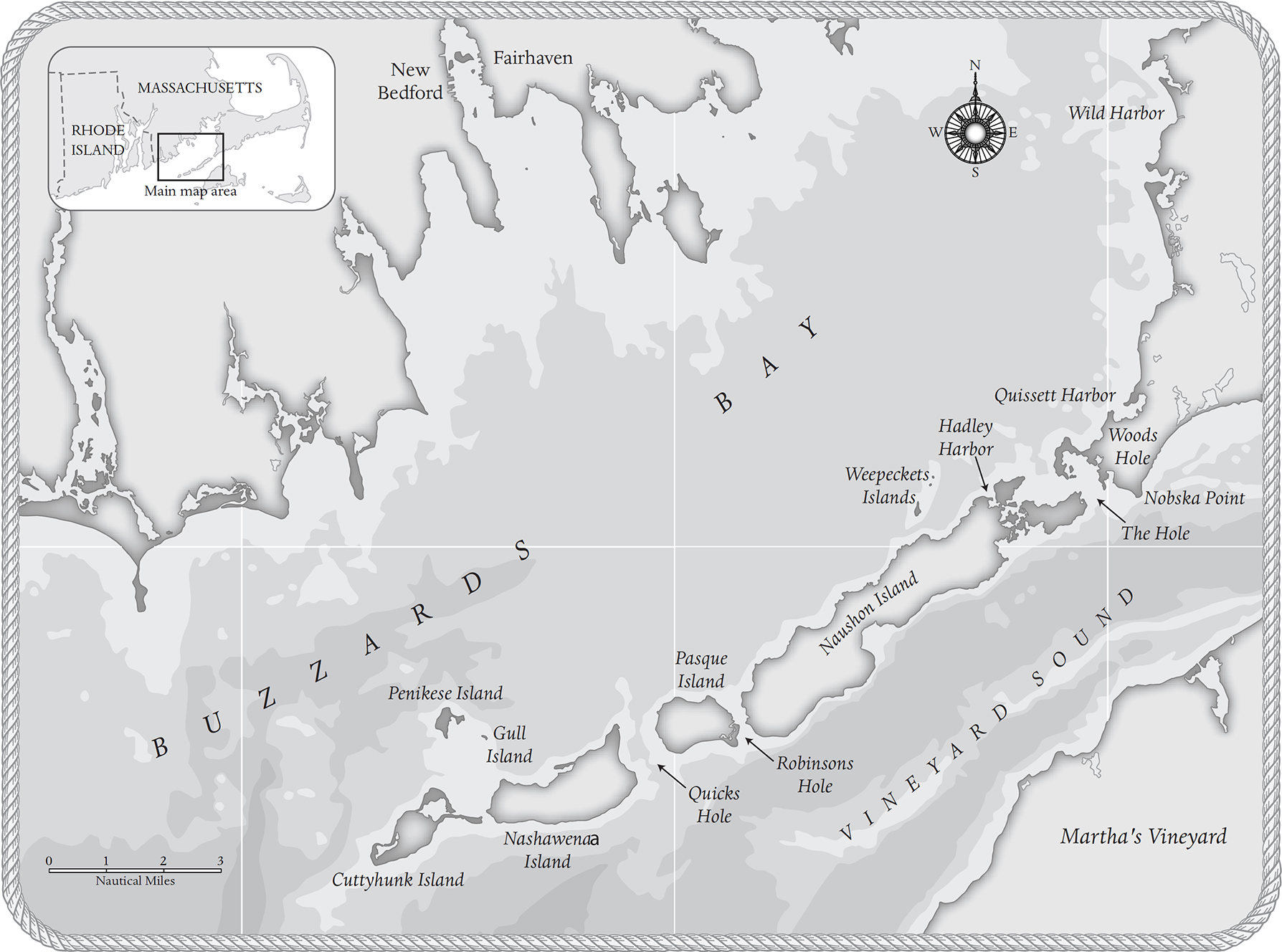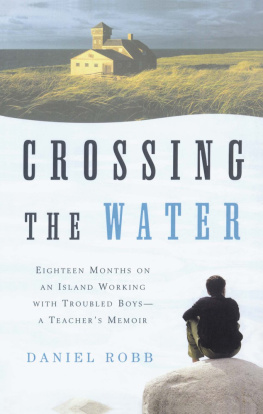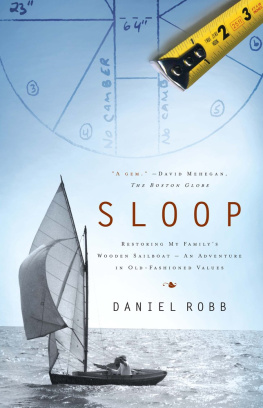ALSO BY DANIEL ROBB
Crossing the Water: Eighteen Months on an Island Working with Troubled BoysA Teachers Memoir


Simon & Schuster
1230 Avenue of the Americans
New York, NY 10020
www.SimonandSchuster.com
Copyright 2008 by Daniel Robb
All rights reserved, including the right to reproduce this book or portions thereof in any form whatsoever. For information address Simon & Schuster Subsidiary Rights Department, 1230 Avenue of the Americas,
New York, NY 10020
First Simon & Schuster hardcover edition June 2008
SIMON & SCHUSTER and colophon are registered trademarks of Simon & Schuster, Inc.
Designed by Paul Dippolito
Jacket design by Timothy Goodman
Jacket photograph by Dorothy I. Crossley
Author photograph courtesy of Daniel Robb
Library of Congress Cataloging-in-Publication Data
Robb, Daniel.
Sloop / Daniel Robb.
p. cm.
Includes bibliographical references and index.
1. Boats and boatingConservation and restoration. I. Title.
VM149.R63 2007
623.822'60288dc22
2007045164
ISBN-13: 978-0-7432-0239-8
ISBN-10: 0-7432-0239-2
ISBN-13: 978-1-4391-6604-8 (eBook)
The names and identifying details of some individuals in this book have been changed. Dialogue has been re-created, and some characters are composites.
All photographs are by the author.
For Alexandra
Contents
1. Sloop
I SAT ON A roof in Marion, Massachusetts, on a December day. I wore heavy overalls, a blue wool sweater, a grey wool hat, brown leather boots, and a tool belt. Occasionally I worked on roofs. I did this as a way to pay bills, or as a favor. I didnt mind the work, once in a while. The view up there was usually good, and it kept me presentthere was always the slight danger of falling off.
This day I was venting my cousins roof to alleviate condensation in her attic. It was just below freezing out, there was little wind, her two dogs were shifting around on their leads down in the driveway, and I was thinking about what I might write next.
There was a low-pressure system coming in, and the dogs could feel it. One, a short-haired pointer, kept pausing to nose an old sailboat that sat across the drive. I, a lifelong sailor, tried not to be distracted by the boat, which lay in a weathered wooden cradle on a rusty trailer. A faded yellow tarp covered her. On top of the tarp was a scattering of pine needles.
The pointer would pause to sniff the air. I found myself doing the same, up on the roof, pointing my nose off to the west beyond the oaks and the road. Like the dog I could smell something sharp in the air. Snow was coming.
I still had a couple hours of work to do. I had to roll the heavy plastic mesh along the ridge, over the narrow slots Id cut through the roof on either side of the peak. Then I had to nail down the hundred-plus cap shingles that would curl over the mesh, covering the ridge. At the end I would drive four nails into the last cap shingle and cover their silvery heads with tar.
Then Id climb down the north valley with a canvas bag holding flashing, nails, saws, and pry bars. Id ease down the heavy staging planks, bringing them to the ground one end at a time, take down the roof jacksslim folding triangles of wood and steel that supported the plankspack up the tools, and load the truck. Which was an old white Saab coupe with a roof rack. Id do all that when I was done. But not yet.
As I worked, the dog kept at it too, nosing the old sloop. Hed sniff her stem, sniff her keel, nose her rudder, then lift his head up and try the air again, auguring something there. Perhaps the scent of her white cedar planks changed for him as the barometer dropped.
For my part, I tried to concentrate on the work. But my eyes, as I sat astride the roof, kept leaving the nail held by my left thumb and forefinger, kept rising to look at the boat down there. Maybe, I thought, I could write about rebuilding her.
Once this thought had arisen, I looked at the boat for a moment, gazed at the curve of her white hull under the edge of the yellow tarp, and at the powdery green of her old bottom paint. Eventually the wind swirled a leaf in the drive in front of the dogs, and I came back to myself. Nah, I said softly, and, You gotta be nuts, and looked again to my hands and the work as the wind moved through the oaks to my left, between me and the road.
But she had been a beauty . She had been drawn by a man spoken of along with Burgess, Crane, Rhodes, Alden: Herreshoff . She was right there, shrouded by a thin lemon-yellow tarp. She had been in my family since 1939, when she was built. Clearly she still had form, although it was hard to tell from the roof how much of that was rot.
Daphie was her name. My mother had grown up sailing her with her brother and sisters during the 1940s and 50s out of Quissett Harbor, just north of Woods Hole on Cape Cod, on the eastern shore of Buzzards Bay.
The Cape at Woods Hole is not quite at its most poetic. It does not reach far out into the cold waves of the Atlantic, the way Provincetown does at its other end. Rather, Woods Hole is a blunt southern corner that juts down into warmer waters. Currents swing with the tides through tight channels there, and islands pepper the waters to the south. One of the beauties of Quissett Harbor, though, is that on most days in summer, just beyond its mouth, a strong southwest breeze comes up around noon. This breeze almost always matures into twelve to fifteen knots of reliable wind, building short, sharp waves that (if you know her) Daphie will handle better than any other small boat. Or so I have always thought. She was made for that place, that wind, those waves.
More than twenty years ago (as a large boy) I had cared for her and sailed her for a few summers. Now, shed been with my cousin for some years, and spent ten or more of those years under the trees alongside which I worked. My cousin was a good person with too many things on her mind, and the boat had suffered.
Place a cap shingle (one-third of a shingle, cut down to resemble a childs drawing of a housea square with the top two corners trimmed off) on the mesh covering the ridge vent. Place it so it half overlaps the last cap shingle. Grab three nails with your left hand out of the pouch on your left hip; hold the hammer in your right hand, which is cold despite the half-finger gloves you wear. Nail the left side of that cap shingle down. Bend the shingle over the ridge. Nail the right side down. Slide forward, squeezing the roof between the knees. Place another cap shingle so it overlaps the last by half. Nail the left side down. Reach for more nails in the pouch. Bend the shingle over the ridge. Nail the right side down. Slide forward.
Hey Danny, you want a coffee? yelled up Carlton, who worked with my cousin. He stood in blue coveralls, squinted up at me.
Yes thank you, Carlton, I said.
How you take it? he yelled up.
Black. Whens the weather gonna hit? I asked.
Twothree hours, max. I can smell it comin, he said, and then, You better come down off that roof, man. Weathers comin and it aint waitin on you.
He disappeared into the house.
The wind moved more strongly through the grey branches of the oaks that rose to the west of the house, and through the needled branches of the several white pines around the boat. About an hour later, after driving the last nail and covering its head with a smear of tar, I brought the tools down the valley, and just as I eased the staging planks down, snowflakes began to fall.
Next page












